I want to show this picture partly because its a very interesting painting and partly because you might enjoy hearing about kind of a strange way of cleaning a painting. Cleaning is part of the art conservation/restoration process but it is usually not an essential part of the preservation process. In other words, a yellow varnish is usually not the cause of a painting falling a part. But, it can be, or course, the reason the painting doesn’t look anything like what it did originally. A dirty painting surface can have a huge affect on the aesthetics… and art is all about aesthetics, right? Don’t agree? Leave a comment…
When we estimate a cleaning, we do special tests to see what dissolves the varnish or grime or whatever (the variety of types of layers we find are many!) and make sure that those solvents DON’T dissolve the original paint… at all! We’ll sometimes, we’re suprised to find a varnish that won’t dissolve!
This very cool 19th century painting of a European circus had been cleaned before but, it seemed obvious, that the previous restorer simply wiped the surface and gave it new varnish because he did not try and remove the yellow varnish… which is very hard.
In fact, it took a fairly exotic recipe for a gel to get the varnish to move. But the problem was that the gel was too strong for the removal of the varnish in areas of dark paint; the dark colors were sensitive. Turns out that we had to break or scratch off the hard varnish instead of dissolving it. Turns out too that the dark areas of paint seemed kind of “cloudy.” So the removal of the varnish allowed the dark colors to really saturate and get a deep color when we applied the new varnish. The transformation was gorgeous.
If you are not “into” looking at paintings, this is probably boring stuff. But its really good info for painting collectors and curators who wonder about the in’s and out’s of estimating the cleaning of paintings.
Just to show you that this wasn’t a freak case, here’s another case that’s in the lab right now: A German painting of lovers from which the varnish came off in large scales and flakes as we broke it off the surface.
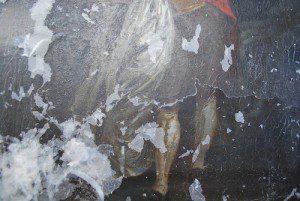
Was this varnish meant to be so hard that it would be a "permanent" varnish? "Permanent" anything in art conservation is NOT a good idea.
So, how long does it take to clean an oil painting? How much does it cost to clean an oil painting? Both questions that I hope you can see is not a question to be answered without testing and experience.
Have a question? Call Scott 805 564 3438 or best_artdoc@yahoo.com
Have an appraisal question? Call Richard at 805 895 5121
Click on the THUMBS UP if you found this interesting. Leave a comment too!
Sign up for our blog updates and get the free $12.95 video on shake proofing your paintings in your home or office.
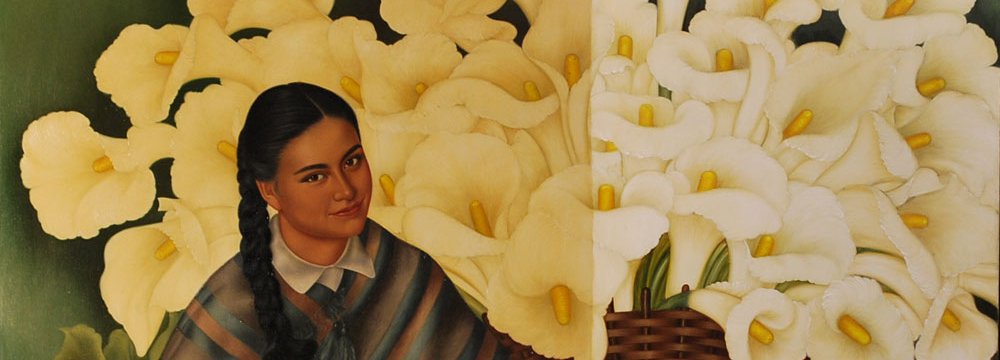
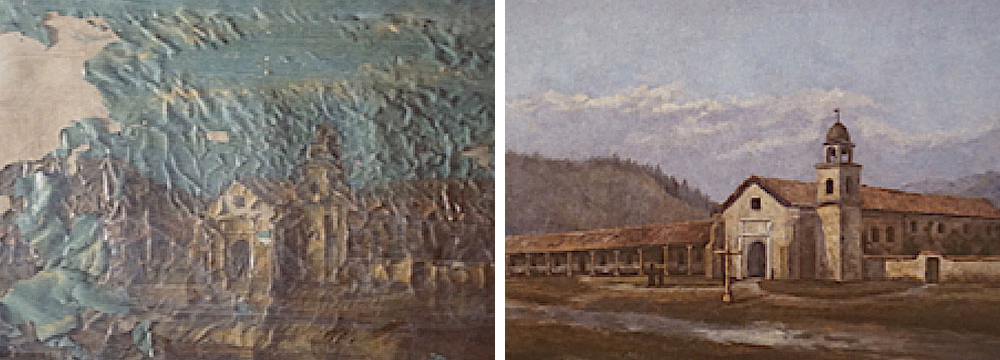
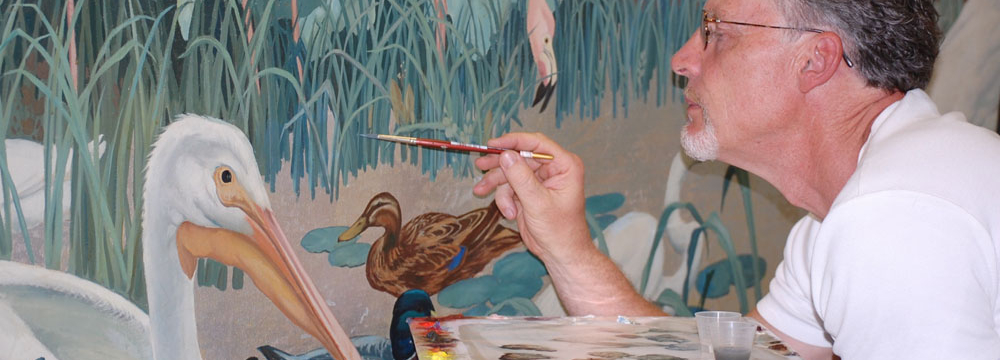
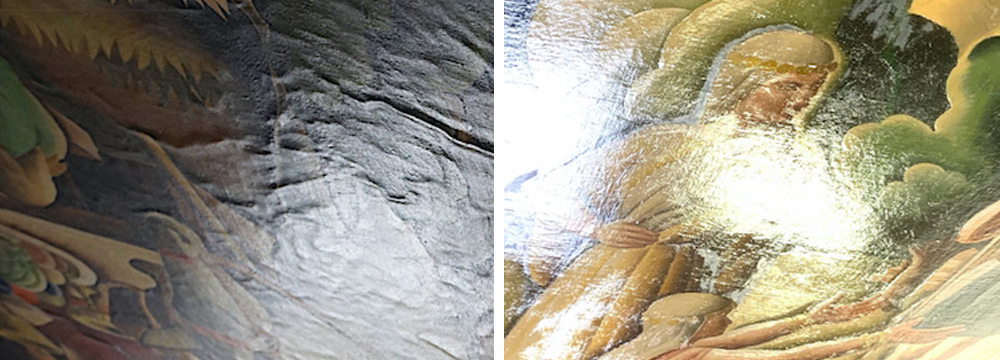
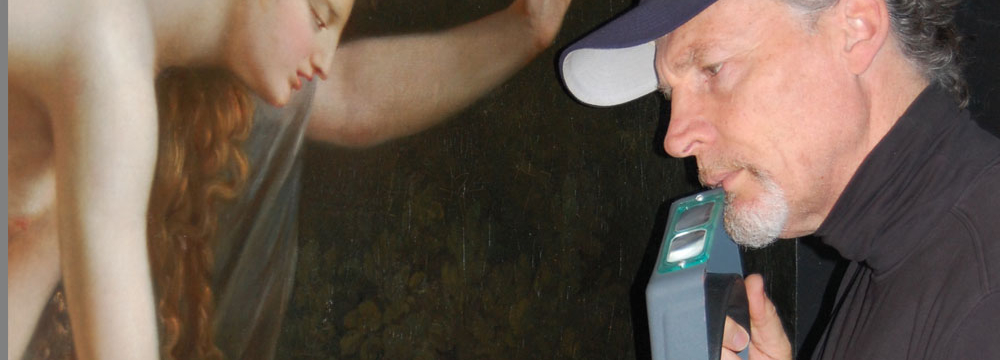

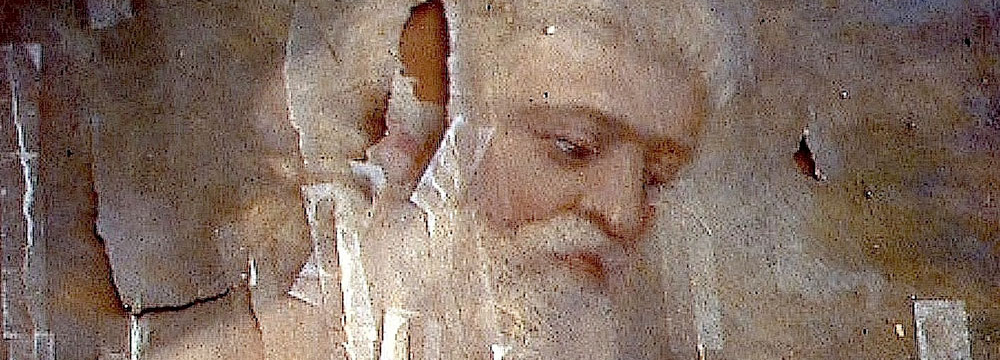
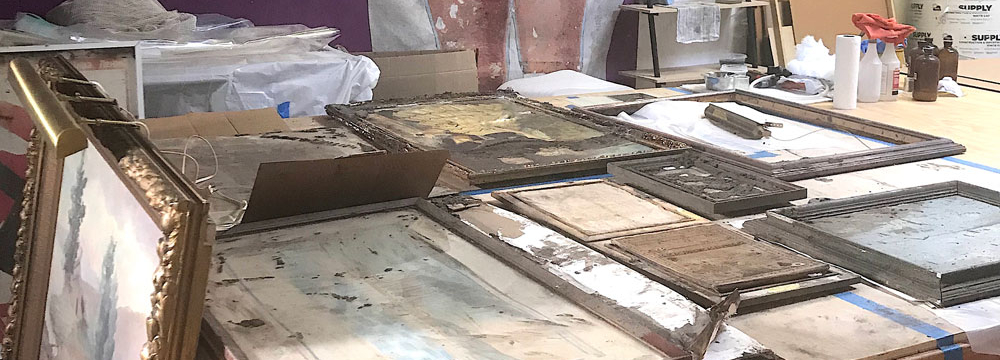


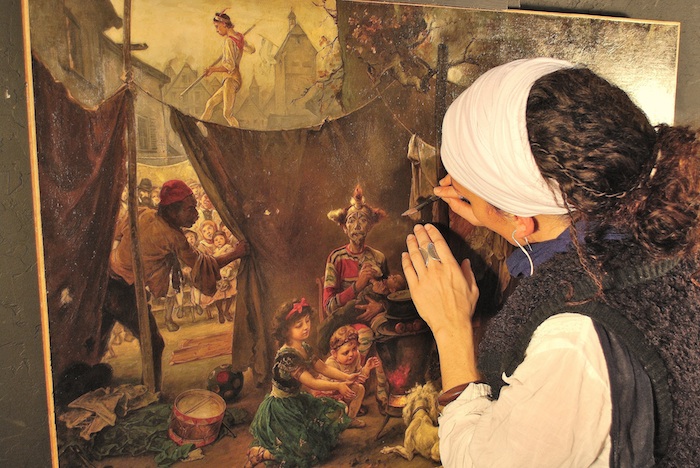
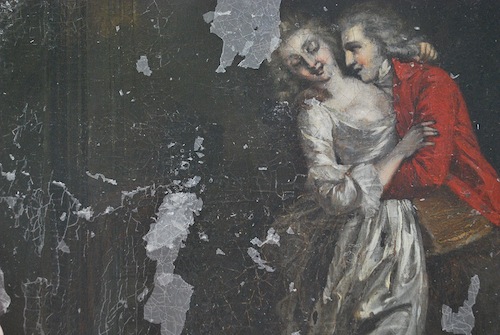

This is such an interesting painting… a bit on the weird side with the clown…but cool. When was it painted?
The Real Person!
Author Scott M. Haskins acts as a real person and passed all tests against spambots. Anti-Spam by CleanTalk.
Anita, I think it was painted about 1880. It is not dated.
Thanks for the insights into cleaning a painting. I thought it was more like a per square inch type of estimating the cost of cleaning but I can see why restorers need to see things in person and do tests. I was also surprised… but its logical, how different paintings need different methods for cleaning. I suppose that expends to other types of restorations too, like flaking and rips. Thanks, really interesting.
Crazy interesting painting but I’m not sure I’d like it hanging in my living room. That central figure feeding baby is kind of creepy. Thanks for the interesting post and I’m gad to know about the quality services you provide. This blog has some interesting posts! Thanks.
Excellent post and interesting painting. Any chance we could see the whole thing? I love this subject of caring for and restoring art. Its great to find you site. Thanks for doing it.
The Real Person!
Author Scott M. Haskins acts as a real person and passed all tests against spambots. Anti-Spam by CleanTalk.
Sherick,
Sorry I can’t show the whole painting. Its a copyright thing. But thanks for connecting.
Nice to see how you actually go about doing this. I can see that it requires patience. I was fascinated when I first learned about oil painting techniques and why they fall apart: that the artists would apply a layer of paint, then maybe wait days for it to dry, then the next layer, and so on… and how that can cause problems for restorers. Finally a coat of varnish or something to preserve it.
Must be real difficult for you wto understand all these layers and not harm them during conservation.
Keep up the efforts, and best of luck.
Brian
Pingback: Allison Naples
The Real Person!
Author scott acts as a real person and passed all tests against spambots. Anti-Spam by CleanTalk.
Allison, Its part of a private painting collection. I don’t think it would have been a poster of this painting. But the artist is famous and perhaps it was of another similar oil painting the same artist did?